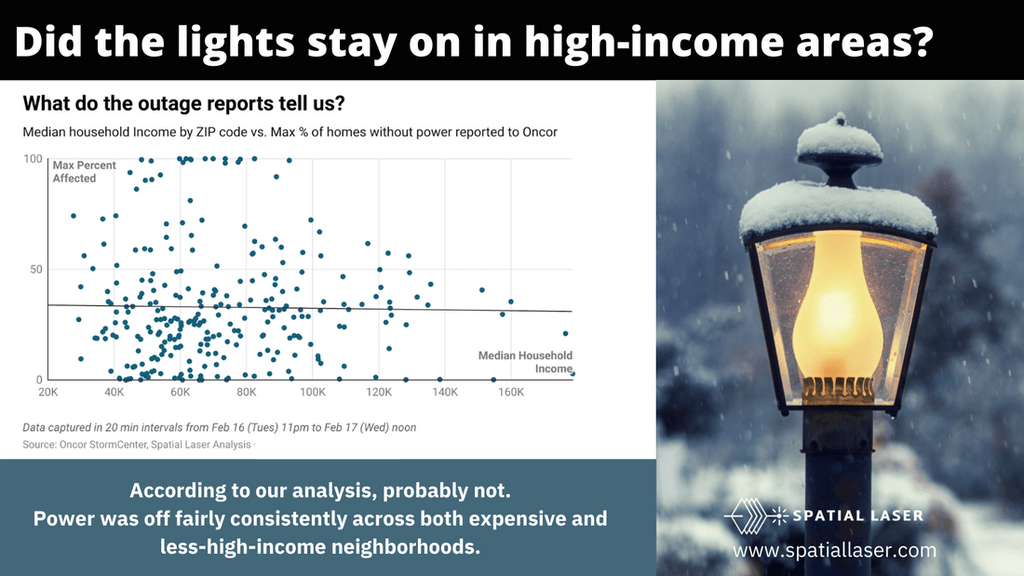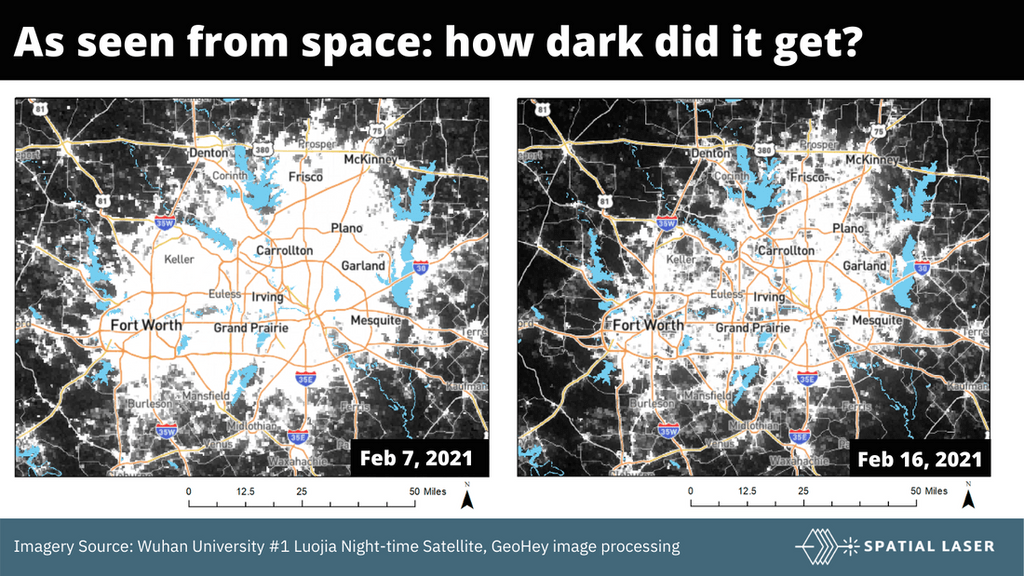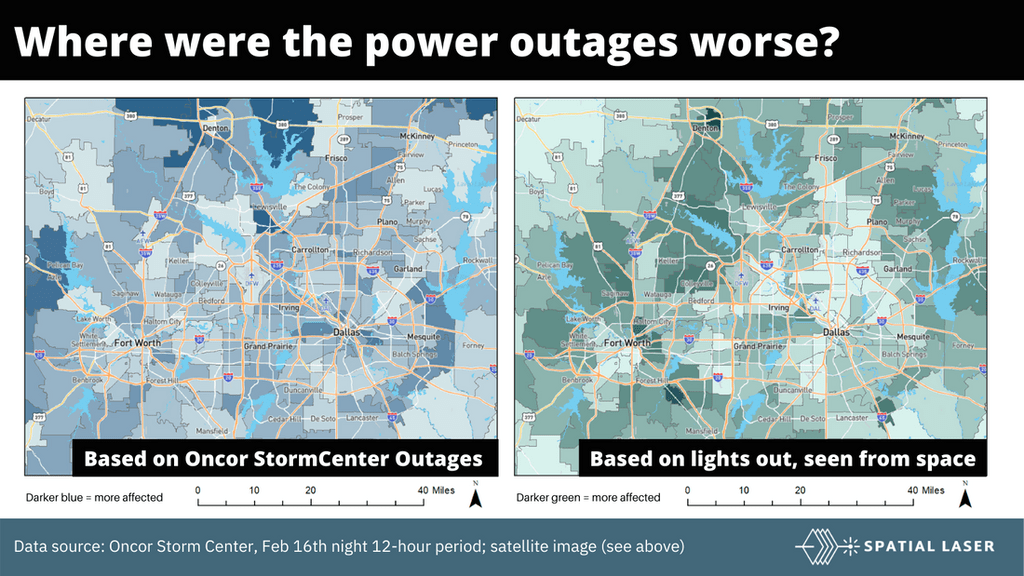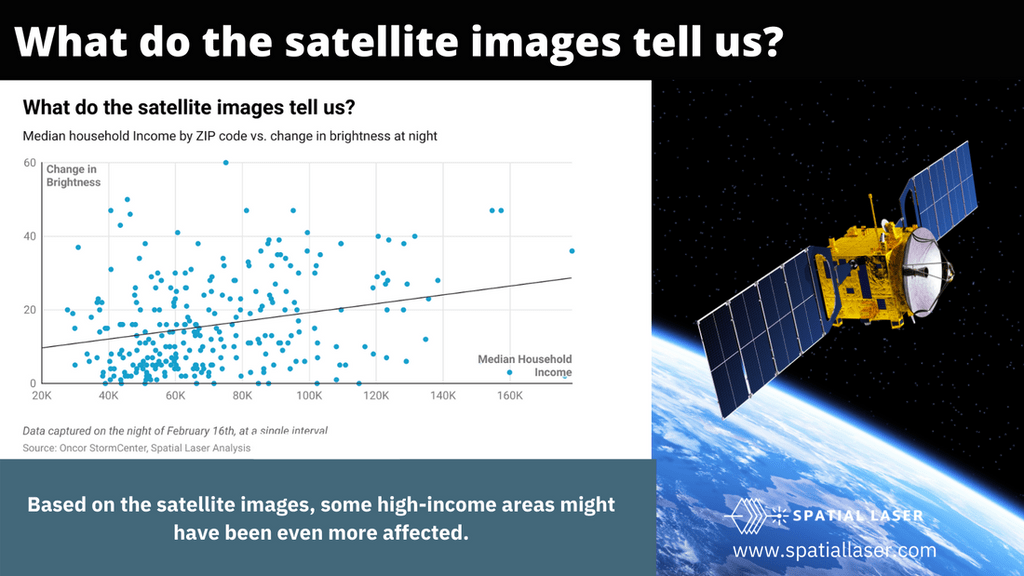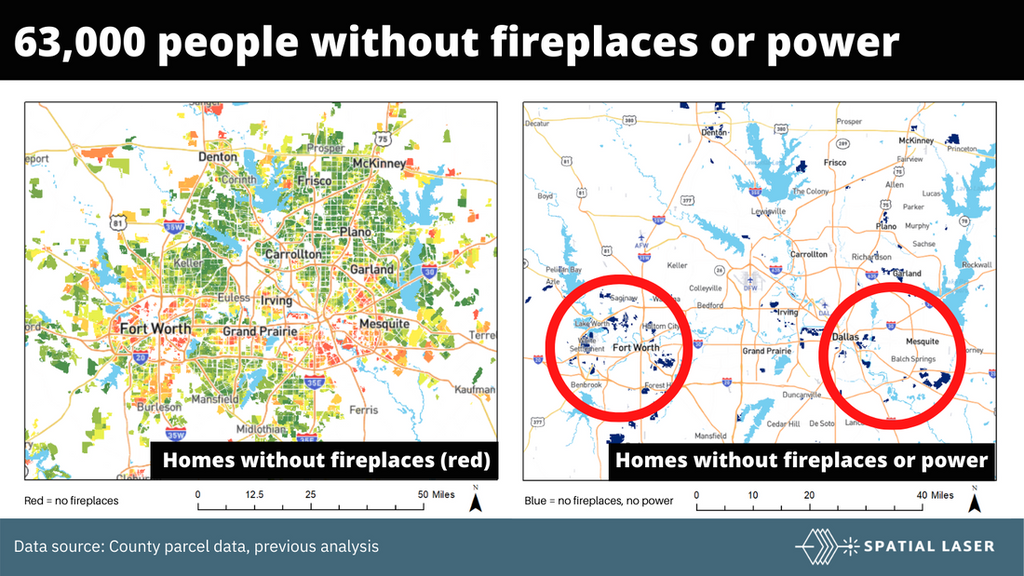By Steven McCord
As temperatures in homes across North Texas plummeted, early reporting through the rolling blackouts questioned whether certain neighborhoods experienced longer power outages, and whether the effects were evenly distributed. Our research revealed that it was an equal-opportunity power outage. The data suggest high-income areas did not experience fewer outages in this event, than other areas. Hardest-hit, however, were 63,000 households in areas that lacked both power and a backup sources of heat.
The outage reports show no relationship with income level
We collected and analyzed the outage report statistics on Oncor’s Storm Center website during the event, and matched it up with local demographic statistics. Our analysis suggests that the power outages affected all income levels, with no relationship between power outages and income. Similarly, there was no correlation with housing prices or demographic composition.
We collected 13 hours of data overnight on Tuesday, February the 16th, recording the outage data by ZIP code every 20 minutes. At one point during the night of the 16th, at least a dozen D-FW area ZIP codes reported 100% loss of power, though most of these were rural ZIP codes.
Night lights as seen from space
Spatial Laser obtained a set of night-time imagery taken by a satellite that compares the night lights of North Texas on the night of the 16th with a “normal” night approximately one week earlier. Areas with power outages appear dark from space (Figure 2).
The night-time imagery was captured as a snapshot by a low-orbit satellite for approximately a few minutes. At the time of the image, high-income areas were actually more affected than other parts of the Metroplex. The areas of Southlake, Colleyville, Westlake, Keller, Flower Mound, among others, appeared as much as 50 percentage points darker than normal (Figure 3).
No power, no fireplace
Up to 23% of homes in the D-FW area do not have a fireplace, according to Spatial Laser analysis of county home ownership records. This meant many homes did not have a source of backup heat. These homes tended to be in older, low-income neighborhoods (Figure 4).
By cross-referencing these with areas that faced above-average power loss based on the analysis above, Spatial Laser identified 63,000 homes at elevated risk from prolonged exposure to cold. These homes were in communities surrounding the north, northwest, and southeast sides of Fort Worth, as well as West Dallas, South Dallas, and the far southeast of the City of Dallas, near Seagoville (Figure 4). These homes were at greatest risk of property damage from pipe freezes and pipe bursts.

